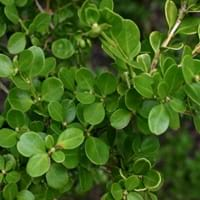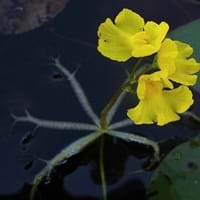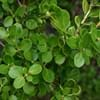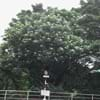Life Span
Perennial
Annual and Perennial
Type
Broadleaf Evergreen
Aquatics
Origin
Hybrid origin
World/Pandemic
Types
Buxus microphylla `Golden Triumph`
Buxus microphylla Herrenhausen'
Buxus microphylla `Henry Hohman
Buxus microphylla `John Baldwin`
Buxus microphylla var. japonica
Buxus microphylla var. japonica `Faulkner`
Utricularia graminifolia, Utricularia vulgaris, Utricularia gibba
Habitat
Wild
Lakes, stream banks
USDA Hardiness Zone
5-9
Not Available
AHS Heat Zone
Not Available
Not Available
Habit
Oval or Rounded
Spreading
Flower Color
Yellow green
Yellow, Purple, Lavender
Flower Color Modifier
Bicolor
Not Available
Fruit Color
Not Available
Non Fruiting Plant
Leaf Color in Spring
Green
Not Available
Leaf Color in Summer
Dark Green
Not Available
Leaf Color in Fall
Dark Green
Not Available
Leaf Color in Winter
Olive, Dark Green, Bronze
Not Available
Leaf Shape
Elliptic
Orbicular
Plant Season
Spring, Summer, Fall, Winter
Spring, Summer, Fall
Sunlight
Full Sun, Partial Sun
Full Sun
Type of Soil
Loam, Sand
Not Available
The pH of Soil
Acidic, Neutral
Acidic, Neutral
Soil Drainage
Well drained
Not Available
Bloom Time
Late Spring
Not Available
Tolerances
Not Available
Wet Site
Where to Plant?
Ground
In Water
How to Plant?
Leaf Cutting, Stem Cutting, stem tip cuttings
Divison, Seedlings
Plant Maintenance
Medium
Medium
Watering Requirements
Do not water frequently
Requires 4 to 8 inches of water above the soil line
In Summer
Lots of watering
Lots of watering
In Spring
Moderate
Moderate
In Winter
Average Water
Average Water
Soil pH
Acidic, Neutral
Acidic, Neutral
Soil Type
Loam, Sand
Not Available
Soil Drainage Capacity
Well drained
Not Available
Sun Exposure
Full Sun, Partial Sun
Full Sun
Pruning
Remove damaged leaves, Remove dead branches, Remove dead leaves
Cut away fading foliage, Remove damaged leaves, Remove dead branches, Remove dead leaves
Fertilizers
All-Purpose Liquid Fertilizer
All-Purpose Liquid Fertilizer
Pests and Diseases
Red blotch
hair algae
Plant Tolerance
Drought
Wet Site
Flowers
Insignificant
Yes
Flower Petal Number
Single
Not Available
Foliage Texture
Fine
Fine
Foliage Sheen
Glossy
Matte
Attracts
Caterpillar, Early/Late Blight, Mites, Spider Mites
Insects
Allergy
Eye irritation, Skin irritation
Avoid during Pregnancy
Aesthetic Uses
Not Used For Aesthetic Purpose
Showy Purposes, Water gardening
Beauty Benefits
Not Available
Not Available
Environmental Uses
Air purification
Air purification
Medicinal Uses
Not Available
Diuretic, Vulnerary
Part of Plant Used
Not Available
Leaves, Root
Other Uses
Not Available
Food for animals, Showy Purposes
Used As Indoor Plant
No
Insignificant
Used As Outdoor Plant
Yes
Yes
Garden Design
Container, Edging, Foundation, Hedges, Rock Garden, Wall, Topiary, Bonsai, Espalier
Bog Garden, Container, Water Gardens, Wildflower
Botanical Name
BUXUS microphylla var japonica
UTRICULARIA
Common Name
Japanese box
littleleaf box
Bladderwort
In Hindi
Japanese Boxwood
Bladderwort plant
In German
Japanese Boxwood
bladderwort Pflanze
In French
Boxwood japonaise
plante Bladderwort
In Spanish
El boj japonés
planta bladderwort
In Greek
Ιαπωνικά Πυξάρι
φυτό υδρόβιο φυτό
In Portuguese
Boxwood japonês
planta bladderwort
In Polish
japoński Bukszpan
Bladderwort roślin
In Latin
Boxwood Italica
bladderwort herba
Phylum
Tracheophyta
Magnoliophyta
Class
Magnoliopsida
Magnoliopsida
Order
Buxales
Scrophulariales
Family
Buxaceae
Lentibulariaceae
Clade
Angiosperms, Eudicots
Angiosperms, Asterids, Eudicots
Tribe
Not Available
Not Available
Subfamily
Not Available
Pitcairnioideae
Difference Between Japanese Boxwood and Bladderwort
If you are confused whether Japanese Boxwood or Bladderwort are same, here are some features about those plants to help you choose better. Many people think that these two plants have the same characteristics, but one can see Japanese Boxwood and Bladderwort Information and learn more about it. Fertilizers required for proper growth of Japanese Boxwood are All-Purpose Liquid Fertilizer, whereas for Bladderwort fertilizers required are All-Purpose Liquid Fertilizer. Hence, one should know the basic difference between Japanese Boxwood and Bladderwort if you are planning to have them in your garden to enhance its beauty.
<
Flowering PlantsImportance of Japanese Boxwood and Bladderwort
Want to have the most appropriate plant for your garden? You might want to know the importance of Japanese Boxwood and Bladderwort. Basically, these two plants vary in many aspects. Compare Japanese Boxwood and Bladderwort as they differ in many characteristics such as their life, care, benefits, facts, etc. Every gardener must at least have the slightest clue about the plants he wants to plant in his garden. Compare their benefits, which differ in many ways like facts and uses. The medicinal use of Japanese Boxwood is Not Available whereas of Bladderwort is Diuretic and Vulnerary. Japanese Boxwood has beauty benefits as follows: Not Available while Bladderwort has beauty benefits as follows: Not Available.
Compare Facts of Japanese Boxwood vs Bladderwort
How to choose the best garden plant for your garden depending upon its facts? Here garden plant comparison will help you to solve this query. Compare the facts of Japanese Boxwood vs Bladderwort and know which one to choose. As garden plants have benefits and other uses, allergy is also a major drawback of plants for some people. Allergic reactions of Japanese Boxwood are Eye irritation and Skin irritation whereas of Bladderwort have Avoid during Pregnancy respectively. Having a fruit bearing plant in your garden can be a plus point of your garden. Japanese Boxwood has no showy fruits and Bladderwort has no showy fruits. Also Japanese Boxwood is not flowering and Bladderwort is flowering. You can compare Japanese Boxwood and Bladderwort facts and facts of other plants too.





